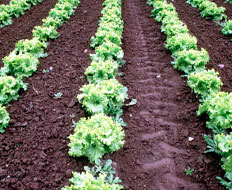What would you need to do to have a truly sustainable restaurant chain? The answer depends on whom you ask.
Talk to a scientist who’s concerned about the impact of greenhouse gases on global climate change, and he will probably tell you that being sustainable means cutting your energy use, which reduces carbon emissions associated with your operation. A waste-management expert might say it’s critical to establish a clear reduce-reuse-recycle plan with the goal of achieving zero-landfill facilities. An animal-welfare expert would undoubtedly suggest a commitment to procuring only free-range poultry, grass-fed beef, and humanely raised pork, while sustainable agriculture advocates would tell you to source your fruits and vegetables locally rather than having them trucked thousands of miles from their points of origin to your front door. Those same folks would also want you to make sure that the fertilizers and pesticides used to grow and protect that produce are organic, or are at least unlikely to harm human health or the environment.
As if all that weren’t enough to keep scads of purchasing agents, environmental engineers, supply-chain managers, and other professionals occupied for years, it could be argued that a truly sustainable restaurant should be housed in a LEED-certified building, pay higher-than-average wages, and contribute a significant percentage of its profits back to local communities. All of this is to say that sustainability is a catchall term that means very, very different things to different people. And companies could almost literally turn themselves inside out trying to please all of them.
My suggestion, then, is for chains that want to embrace sustainability to first set their sights on the highest-impact areas of their businesses—those with the potential to make customers feel better about patronizing the company’s establishments—and to do so more regularly. And the highest-impact aspect of the restaurant experience is, naturally, the food itself.
Here are a few thoughts on specific areas where restaurant chains can focus their energies and resources to enhance their sustainability credentials and move toward more ecologically, environmentally, and ethically “correct” supply chains:
1. Incorporate grass-fed beef, but cook accordingly. Adding grass-fed beef to your menu can help address two entirely different sets of sustainability-related considerations. From an animal-welfare standpoint, allowing cattle to graze on open pastures strikes many experts as being eminently more humane than keeping them confined and raised on a grain-based diet. And from a human health perspective, grass-fed beef is, by most reckonings, a better choice; one cooking publication recently reported that if an American who eats the per-capita U.S. average of 67 pounds per year were to switch from grain- to grass-fed beef, she would save almost 16,000 calories per year.
The challenge with grass-fed beef—apart from its often-premium price—is that, given the lower fat content and minimal marbling, it can tend toward toughness if it isn’t properly prepared. Ground-beef applications present fewer challenges than those where whole-muscle cuts are required. So chains that serve these less-processed cuts may want to explore different tenderizing techniques, including stewing and low-temperature braising or roasting, to give grass-fed beef a texture consumers will find appealing.
2. Go fish … sustainably. It’s no secret that the world’s fish stocks are enormously stressed and that securing high-quality, sustainable seafood can be expensive and complicated. The Monterey Bay Aquarium’s seafood guides are helpful in charting a course for sustainable menu offerings, which include both more traditional, less-fishy-tasting species and varieties that Americans have traditionally found too potent, flavor-wise, for their palates.
Some types of mackerel, sardines, and other more pungent fish, for instance, are relatively plentiful. But while the notion of a sardine sandwich in quick-serve or fast-casual contexts is extremely far-fetched, it’s not impossible to imagine an enterprising chain’s menu-development and R&D teams toying with various marinades, seasonings, spices, and herbs to neutralize or offset the more “provocative” flavor qualities of certain species. A successful result could enable that chain to develop fish sandwiches, nuggets, seafood salads, and other menu items that would work well for consumers and permit the chain to tout its sustainable seafood ethos.
3. Broaden your veggie offerings. While switching to sustainable fish and grass-fed beef is primarily a supply-chain issue, incorporating more vegetable-based dishes is a true menu-development challenge. Still, by introducing more vegetarian offerings, chains can effectively reduce their reliance on the often-carbon-intensive livestock industries while meeting consumer demand for healthier products. That’s a pretty good way to get more sustainable, fast.
Until and unless some sort of national certification scheme emerges to help determine who qualifies as a sustainable restaurant operator, the process of satisfying different groups’ sustainability-related concerns is going to remain a vexing challenge for many chains. But, however things shake out, it’s a sure bet that any foodservice concept that wants to be able to establish its sustainability bona fides is going to have to account for its menu decisions. That’s why I suggest operators start by focusing on the food—on developing a more environmentally friendly, ecologically sound, and ethically upright menu—and go from there.












